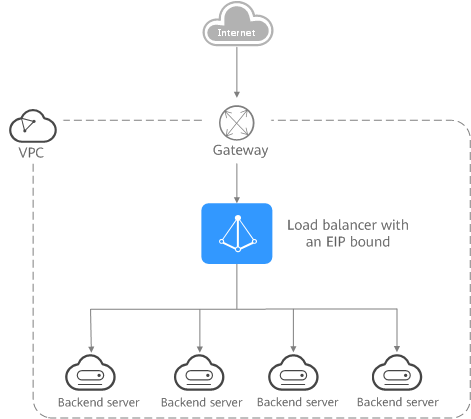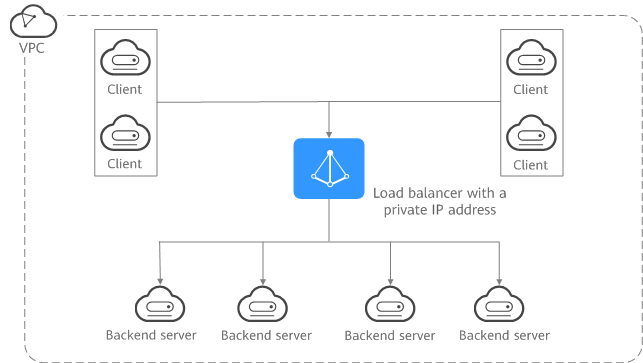Load Balancing on a Public or Private Network
A load balancer can work on either a public or private network.
Load Balancing on a Public Network
You can bind an EIP to a load balancer so that it can receive requests from the Internet and route the requests to backend servers.
Figure 1 Load balancing on a public network

Load Balancing on a Private Network
A load balancer has only a private IP address to receive requests from clients in a VPC and routes the requests to backend servers in the same VPC. This type of load balancer can only be accessed in a VPC.
Figure 2 Load balancing on a private network

Network Types and Load Balancers
Load Balancer Type | Network Type | Description |
|---|---|---|
Dedicated load balancers | Public IPv4 network | Each load balancer has an IPv4 EIP bound to enable it to route requests over the Internet. |
Private IPv4 network | Each load balancer has only a private IPv4 address and can route requests in a VPC. | |
IPv6 network | Each load balancer has an IPv6 address bound.
|
Load Balancer Type | Network Type | Description |
|---|---|---|
Shared load balancers | Public IPv4 network | Each load balancer has an EIP bound to enable it to route requests over the Internet. |
Private IPv4 network | Each load balancer has only a private IP address and can route requests in a VPC. NOTE: Shared load balancers support private IPv4 networks by default. The private IP address of a shared load balancer cannot be changed. |
- Load Balancing on a Public Network
- Load Balancing on a Private Network
- Network Types and Load Balancers